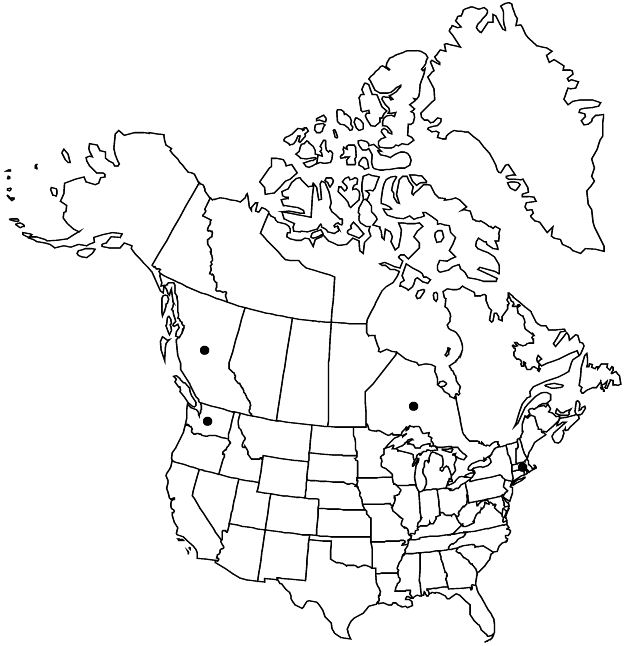Difference between revisions of "Sorbus intermedia"
Syn. Pl. 2: 38. 1806.
FNA>Volume Importer |
imported>Volume Importer |
||
| (6 intermediate revisions by 2 users not shown) | |||
| Line 12: | Line 12: | ||
|label=Introduced | |label=Introduced | ||
}} | }} | ||
| − | |basionyms={{Treatment/ID/ | + | |basionyms={{Treatment/ID/Basionym |
|name=Pyrus intermedia | |name=Pyrus intermedia | ||
|authority=Ehrhart | |authority=Ehrhart | ||
| + | |rank=species | ||
| + | |publication_title=Gartenkalender | ||
| + | |publication_place=4: 197. 1784 | ||
}} | }} | ||
|synonyms={{Treatment/ID/Synonym | |synonyms={{Treatment/ID/Synonym | ||
|name=Aria intermedia | |name=Aria intermedia | ||
|authority=(Ehrhart) Schur | |authority=(Ehrhart) Schur | ||
| + | |rank=species | ||
}} | }} | ||
|hierarchy=Rosaceae;Rosaceae subfam. Amygdaloideae;Rosaceae tribe Gillenieae;Sorbus;Sorbus subg. Aria;Sorbus intermedia | |hierarchy=Rosaceae;Rosaceae subfam. Amygdaloideae;Rosaceae tribe Gillenieae;Sorbus;Sorbus subg. Aria;Sorbus intermedia | ||
| Line 34: | Line 38: | ||
|elevation=0–100 m | |elevation=0–100 m | ||
|distribution=B.C.;Ont.;Mass.;Wash.;Europe. | |distribution=B.C.;Ont.;Mass.;Wash.;Europe. | ||
| − | |discussion=<p>Sorbus aria (Linnaeus) Crantz of Europe has been reported from San Juan County, Washington (S. Atkinson and F. Sharpe 1993; J. T. Kartesz and C. A. Meacham 2003). Those populations are S. intermedia, with more deeply lobed leaves and broader winter buds.</p> | + | |introduced=true |
| + | |discussion=<p><i>Sorbus</i> aria (Linnaeus) Crantz of Europe has been reported from San Juan County, Washington (S. Atkinson and F. Sharpe 1993; J. T. Kartesz and C. A. Meacham 2003). Those populations are <i>S. intermedia</i>, with more deeply lobed leaves and broader winter buds.</p> | ||
|tables= | |tables= | ||
|references= | |references= | ||
| Line 43: | Line 48: | ||
-->{{#Taxon: | -->{{#Taxon: | ||
name=Sorbus intermedia | name=Sorbus intermedia | ||
| − | |||
|authority=(Ehrhart) Persoon | |authority=(Ehrhart) Persoon | ||
|rank=species | |rank=species | ||
| Line 59: | Line 63: | ||
|publication year=1806 | |publication year=1806 | ||
|special status=Introduced | |special status=Introduced | ||
| − | |source xml=https:// | + | |source xml=https://bitbucket.org/aafc-mbb/fna-data-curation/src/2e0870ddd59836b60bcf96646a41e87ea5a5943a/coarse_grained_fna_xml/V9/V9_735.xml |
|subfamily=Rosaceae subfam. Amygdaloideae | |subfamily=Rosaceae subfam. Amygdaloideae | ||
|tribe=Rosaceae tribe Gillenieae | |tribe=Rosaceae tribe Gillenieae | ||
Latest revision as of 22:58, 5 November 2020
Trees, to 70[–200] dm. Stems 1; bark gray; winter buds green to red-brown, ovoid, 5–12 mm, shiny, slightly glutinous, whitish-villous. Leaves simple; stipules early deciduous, densely whitish-villous; blade shiny, green to dark green adaxially, ovate to elliptic, 6–13 × 3.5–8.5 cm, margins proximally 4–7 pinnately lobed, lobes ± oblong, 1–1.5(–1.8) cm wide, basal sinuses deepest, margins distally coarsely serrate, main pairs of secondary veins 8–10, apex acute to obtuse, abaxial surface white-tomentose, adaxial glabrous or sparsely villous, indument usually persistent. Panicles 18–85-flowered, rounded, 6–17 cm diam.; peduncles white-tomentose. Pedicels white-tomentose. Flowers 14–16 mm diam.; hypanthium whitish-tomentose, hypanthium plus sepals 5–6 mm; sepals 1.5–2.5 mm, margins villous and eglandular, rarely with inconspicuous glands; petals white, elliptic to broadly ovate, 5–7 mm; stamens 20; carpels distinct, apex conic, styles 2, 2.5–4 mm. Infructescences thinly white-tomentose to glabrate. Pomes bright red, ellipsoid, sometimes narrowly obovoid, 7–16 × 6–11 mm, shiny, faintly glaucous; lenticels few; sepals inconspicuous, erect, villous toward apex. Seeds red-brown, narrowly ovoid, 6–6.5 × 2.5–3.1 mm, slightly asymmetric, slightly flattened. 2n = 68 (Europe).
Phenology: Flowering spring; fruiting fall.
Habitat: Thickets, roadsides, waste ground, disturbed conifer forests
Elevation: 0–100 m
Distribution

Introduced; B.C., Ont., Mass., Wash., Europe.
Discussion
Sorbus aria (Linnaeus) Crantz of Europe has been reported from San Juan County, Washington (S. Atkinson and F. Sharpe 1993; J. T. Kartesz and C. A. Meacham 2003). Those populations are S. intermedia, with more deeply lobed leaves and broader winter buds.
Selected References
None.